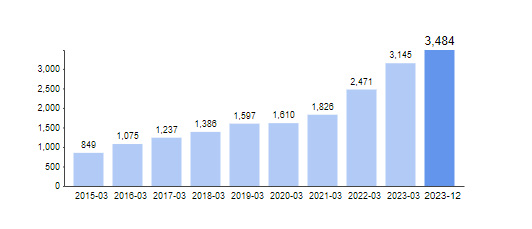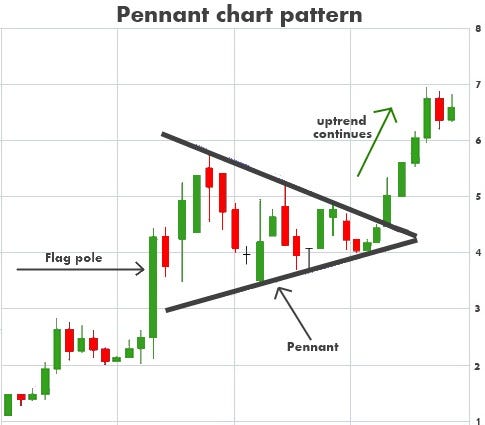20 Recommended Facts For Deciding On Ai For Stock Trading
20 Recommended Facts For Deciding On Ai For Stock Trading
Blog Article
Top 10 Tips For Focusing On Risk Management In Ai Stock Trading, From Pennies To copyright
The importance of focusing on risk is essential to AI stock trading to succeed, particularly when it comes to high-risk markets. Here are 10 strategies to incorporate risk management methods into your AI strategies.
1. Define Risk Tolerance
Tips - Set a specific limit on the acceptable loss for each trade, for each day, and for the total portfolio.
Your AI trading program will be more accurate when you are aware of your risk tolerance.
2. Automated stop-loss and take-profit orders
Tips: Make use of AI to dynamically adjust and implement stop-loss, take-profit and profit levels based on market volatility.
Why? Automated security measures minimize losses and ensure profits with no emotional involvement.
3. Diversify Your Portfolio
You can spread your investment across many assets, markets and industries.
The reason: Diversification can help balance potential losses and gains through reducing the risk associated with each asset.
4. Set Position Sizing Rules
Tip Utilize AI to calculate the size of your position based on:
Portfolio size.
Risk per trade (e.g. 1 to 2 percent of the portfolio value).
Asset volatility.
Position sizing is important to avoid overexposure in high-risk trading.
5. Monitor Volatility & Adjust Strategies
Use indicators to measure the level of volatility, like the VIX for stocks, or on-chain data for copyright.
Why is higher volatility a call for tighter risk controls, adaptive trading strategies and greater levels of trading.
6. Backtest Risk Management Rules
Tip: In order to determine the efficacy of risk control parameters, such as stop-loss limits and positions You should incorporate these in backtests.
The reason: Test your risk management measures to ensure they are viable under different market conditions.
7. Implement Risk-Reward Ratios
Tip. Be sure that every trade has the right risk-reward such as 1:3 (1:3 = $1 at risk to $3 gain).
The reason: Consistently using positive ratios increases long-term profits even in the event of occasional losses.
8. AI can detect and react to any anomalies
Utilize anomaly detection techniques for finding unusual patterns in trading like sudden surges in price or volume.
The reason is that early detection allows you to alter your strategy or exit trades prior to a significant market change.
9. Hedging Strategies - Incorporate them into your company
To lower risk, you can use hedging strategies like options or futures.
Penny stocks: hedge your portfolio using ETFs in the sector or assets that are linked to the industry.
copyright: Secure your investments with stablecoins (or the inverse ETFs)
The reason: Hedging protects against price fluctuations that could be detrimental to the business.
10. Continuously review and adjust risk parameters
Tip: As the marketplace changes, you should review and update your AI system's risk settings.
The reason is that a dynamic management of risk makes sure that your strategy will be effective in a variety of market conditions.
Bonus: Use Risk Assessment Metrics
Tip: Evaluate your strategy using metrics like:
Max Drawdown Maximum Portfolio Fall from the trough to the peak.
Sharpe Ratio: Risk-adjusted return.
Win-Loss: Ratio of the amount of trades that are profitable to losses.
What are they? They provide an insight into the effectiveness of your strategy and exposure to risk.
With these suggestions you can develop a strong system for managing risk that can improve the effectiveness and security of the AI-based trading strategies you employ in penny stocks, as well as copyright markets. View the most popular right here on ai stock for blog examples including stocks ai, penny ai stocks, using ai to trade stocks, trading bots for stocks, ai copyright trading, ai predictor, stock analysis app, using ai to trade stocks, using ai to trade stocks, best ai stocks and more. 
Top 10 Suggestions For Ai Investors, Stockpickers And Forecasters To Pay Attention To Risk Metrics
It is essential to pay attention to risk metrics to ensure that your AI stockspotter, forecasts and investment strategies remain balanced and resilient to market volatility. Knowing and managing your risk will aid in avoiding massive losses and allow you to make well-informed and informed decisions. Here are 10 tips to incorporate risk indicators into AI investment and stock selection strategies.
1. Understanding key risk measures: Sharpe ratios, max drawdown, Volatility
Tips - Concentrate on the most important metrics of risk such as the sharpe ratio, maximum withdrawal, and volatility, to assess the risk-adjusted performance of your AI.
Why:
Sharpe ratio measures the return on investment relative to the level of risk. A higher Sharpe ratio indicates better risk-adjusted performance.
Maximum drawdown is the most significant peak-to-trough loss, helping you to understand the possibility of huge losses.
Volatility is the measure of market risk and fluctuation in price. Low volatility indicates greater stability, while high volatility indicates higher risk.
2. Implement Risk-Adjusted Return Metrics
Tips: To assess the actual performance, you can use measures that are adjusted for risk. This includes the Sortino and Calmar ratios (which focus on risks that are a risk to the downside) and the return to maximum drawdowns.
What are the reasons: The metrics will show you the way your AI model performs in relation to its level of risk. This will help you to decide if the risk is justified.
3. Monitor Portfolio Diversification to Reduce Concentration Risk
Utilize AI optimization and management to ensure that your portfolio is adequately diversified across asset classes.
Diversification helps reduce the risk of concentration which can occur in the event that an investment portfolio is too dependent on one sector, market or stock. AI can assist in identifying relationships between assets and then adjust allocations to minimize the risk.
4. Track beta to measure the market's sensitivity
Tips: Use beta coefficients to determine the sensitivity of your stock or portfolio to market trends overall.
Why: A portfolio with more than 1 beta is more volatile than the market, while having a beta lower than 1 indicates less volatility. Knowing beta lets you tailor your risk exposure according to the market's movements and the risk tolerance of the investor.
5. Implement Stop-Loss, Make-Profit and Risk Tolerance levels
To manage the risk of losing money and to lock in profits, you can set stop-loss limits or take-profit limit by using AI forecasting and risk models.
Why: Stop-losses protect your from losses that are too high, while take-profit levels lock in gains. AI helps determine the optimal level based on historical price movements and the volatility. It helps to maintain a balance of the risk of reward.
6. Monte Carlo simulations can be used to assess the risk involved in various scenarios.
Tips : Monte Carlo models can be utilized to assess the potential results of portfolios in various risk and market conditions.
Why is that? Monte Carlo simulations are a method to gain a probabilistic picture of the future performance of a portfolio. It allows you to plan better for risky scenarios like massive losses and extreme volatility.
7. Use correlation to assess the risk of systemic as well as unsystematic.
Tip. Make use of AI to study the relationship between the assets in your portfolio and market indexes. You can identify both systematic risks and unsystematic ones.
What is the reason? Systematic risk can affect the entire market (e.g., economic downturns) and unsystematic risk is specific to particular assets (e.g. specific issues for companies). AI can lower unsystematic risk through the recommendation of more correlated investments.
8. Monitor Value at risk (VaR) to determine the potential loss.
Tip: Use Value at Risk (VaR) models to quantify the possibility of loss in the portfolio within a specific time period, based upon the confidence level of the model.
Why: VaR gives you a clear picture of the possible worst-case scenario in terms of losses, making it possible to determine the risks in your portfolio in normal market conditions. AI will adjust VaR according to changing market conditions.
9. Create a dynamic risk limit that is that is based on current market conditions
Tips: Make use of AI to dynamically adjust risk limits in response to the volatility of the market, economic conditions, and stock-related correlations.
Why: Dynamic risks limits your portfolio's exposure to risk that is excessive when there is high volatility or uncertainty. AI can analyse real-time data to make adjustments in positions and keep your risk tolerance to reasonable levels.
10. Machine Learning can be used to predict the outcomes of tail events and risk factors
Tip Integrate machine learning to predict extreme risk or tail risk instances (e.g. black swans, market crashes, market crashes) Based on historical data and sentiment analyses.
What is the reason: AI models are able to detect risks that other models may overlook. This can help predict and prepare for extremely uncommon market developments. Tail-risk analysis helps investors prepare for the possibility of catastrophic losses.
Bonus: Regularly reevaluate Risk Metrics in the light of changing market conditions
TIP: Always reevaluate your risk-based metrics and models as market conditions evolve and update them frequently to reflect changes in geopolitical, economic and financial variables.
Why: Markets conditions can quickly change, and using an the wrong risk model can result in an untrue assessment of the risk. Regular updates will ensure that your AI models are able to adapt to changing risks and accurately reflect current market dynamics.
Conclusion
You can create a portfolio with greater resilience and flexibility by tracking and incorporating risk-related metrics into your AI stock picking, prediction models and investment strategies. AI tools are powerful for managing risk and assessing the risk. They allow investors to make well-informed, datadriven decisions which balance acceptable risks with potential gains. These guidelines will help you create a solid framework for risk management that will improve the stability and efficiency of your investment. Have a look at the top rated inciteai.com ai stocks for blog tips including ai penny stocks, ai sports betting, ai penny stocks to buy, smart stocks ai, ai stock prediction, free ai tool for stock market india, ai for stock trading, copyright ai trading, ai stocks to invest in, ai for stock trading and more.